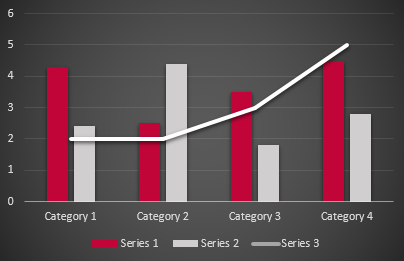Developing an accurate as possible forecast is very important in running a business. Demand planners spend countless hours trying to create a better forecast so that they can help their company be more efficient. A key ingredient in the creation of the final forecast is the forecast generated by a computer program, which is based in statistics. In this blog post, we will focus on creating better statistical forecast.Whether using an Excel Spreadsheet, an extension package from your ERP vendor, or a best-of-breed demand planning software, below are 5 things to do to make your statistical forecast more accurate:
- Understand where your focus needs to be – Invest more time and energy understanding the level at which the operations team will find the forecast most useful. Forecasting at a low, detailed level results in too much noise, causing error. Forecasting at too high of a level has no benefit for operations. Find a sweet spot and measure accuracy at that level.
- Analyze and segment your data – Do not group your new or dying products with your stable goods. Do not treat your products with small, sporadic or variable demand the same as your high volume or steady items. Segment appropriately and then apply the proper methods to these groups. Doing so will greatly enhance your forecast.
- Account for product/customer ‘mergers’ – It is not uncommon for one customer to acquire another, or for a new product to replace an old one. You need to take this into account when thinking about your software. Unless a ‘realignment’ is performed, the two history streams (old vs. new) will likely produce two useless streams of forecast. The awareness to identify and realign such changes will provide an immediate improvement in your forecast.
- Don’t be afraid to be simple – Good results are not guaranteed just because you use advanced methods from a sophisticated forecasting software. It is important to remember simple practices of forecasting: three period averages, same as period last year, etc. In many cases, you will find the sophisticated procedures are less reliable and cannot produce a better forecast generated from the simple methods.
- Remember the end goal – Your job is to develop a better forecast. Top down, Bottom up, Middle out, these are all perfectly fine ways to do your forecasting, as long as your forecast is improving. If it is not, these methodologies should be rendered useless. Invest your time in experimenting and finding new ways to do what truly matters, improving your forecast. Never stop refining your methodology, and find the best way to make your forecast more accurate.
These are the top 5 things I’ve learned from working with our customers. Please feel free to provide any that I have left out or feel should be included via the comments section.
Like this blog? Follow us on LinkedIn or Twitter and we will send you notifications on all future blogs.






